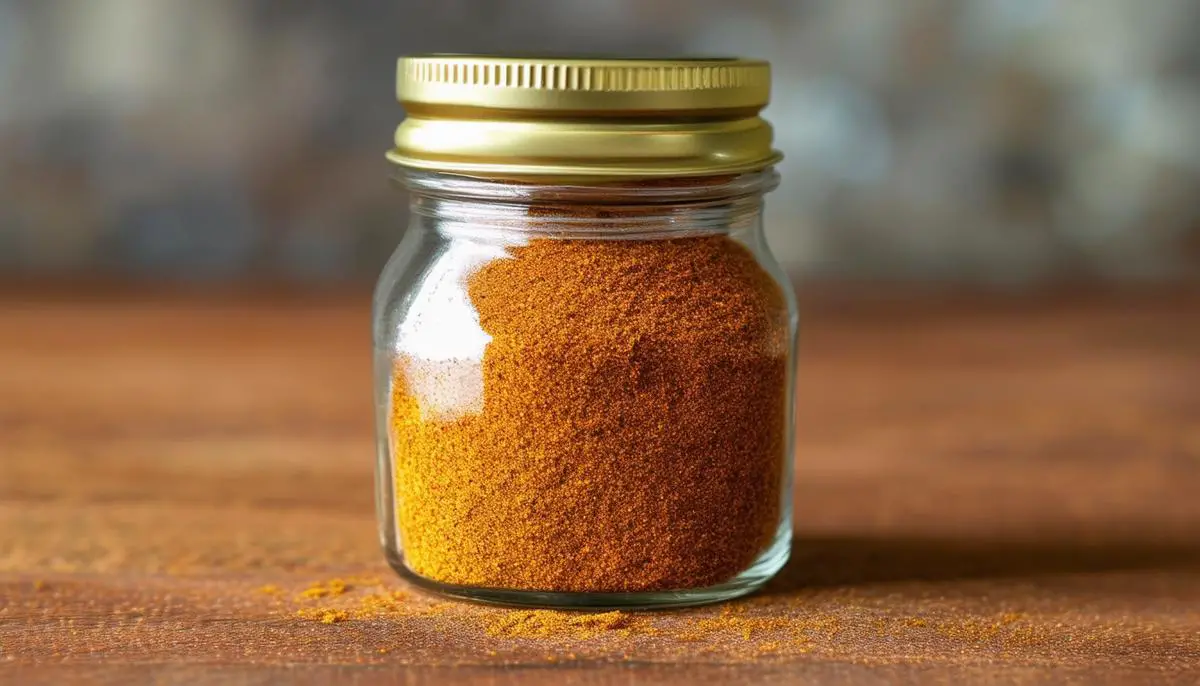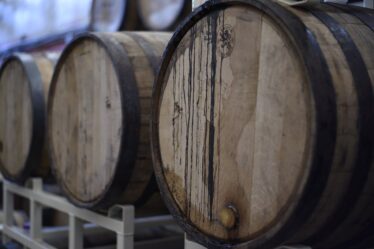
Origins and Culinary Uses
In its powdered form, Worcestershire sauce seamlessly melds into dry mixes or serves as a piquant sprinkle directly on food, liberated from the binding constraints of a sauce. This crumbly variant retains all the explosive flavors—sour, sweet, salty, and bitter—without clouding the visual appeal of a dish or diluting textures. A lifesaver in marinades where liquid can be an intruder, this powder ensures taste infused seamlessly throughout the dish.
Consequently, its value in kitchens where innovation holds court is immense. Beyond merely embellishing hearty stews or vibrant dressings, Worcestershire powder becomes an alchemist turning the simple into the sublime. Picture transforming a common bowl of macaroni and cheese—a dish eternally craving brightness and depth—into an enigmatic version of itself with just a hint of this spice.
Such utility stretches into daring modern culinary experiments. Chefs, walking the tightrope between tradition and innovation, find Worcestershire powder an agreeable ally. Whether dusting steaks for that umami-packed crust or folding into spice rubs that promise unique flavor profiles, this powder proves versatile without overwhelming palates.
Handling the potential packaging pitfalls—like moisture's insidious clumping effects—requires vigilance. Adopting pantry tricks like integrating silica packets or opting for impermeable storage can enhance longevity and readiness for use. Mastery of these minutiae ensures that this spice, with roots tracing back to impromptu fermentation and accidental rediscovery, retains its rightful place as a crown jewel in seasoning arsenals around the globe. Rather than confine to simple enhancement, it invites each culinary artist to explore, innovate, and perhaps stumble upon their own serendipitous kitchen discoveries.
Comparing Worcestershire Sauce and Powder
Comparing the traditional liquid Worcestershire sauce with its powdered counterpart reveals both practical and culinary distinctions. Worcestershire sauce in its liquid form imparts a distinct intensity with layers of flavor that meld as they simmer. This makes it particularly suitable for dishes benefiting from slow absorbing flavors, although its moisture can be a disruption in textures for dishes meant to be crisper or drier.
Worcestershire powder offers a more controlled application. The dry form provides easier integration into spice blends, rubs, and coatings that demand consistency without additional fluid. This feature is particularly useful in dishes where moisture control is paramount, such as in dry rubs for meat or adding an undiluted flavor pop to snack mixes.
In terms of storage and ease of use, the powdered variety holds significant advantages. It is less susceptible to spoilage compared to its liquid counterpart which requires careful sealing to keep out bacteria and sustain its shelf life. The powder can be a space-efficient option in the kitchen, occupying minimal storage space and avoiding the risk associated with glass bottles. These factors, combined with its ability to evenly distribute intense flavors, make Worcestershire powder a versatile spice, adept at enhancing a wide array of dishes with precision and reliability.
Thus, while both forms of Worcestershire bring their unique strengths to the culinary table, the choice between them often rests on specific cooking requirements and storage preferences within the kitchen's operational constraints. Each chef may choose according to the recipe's needs and the logistical demands of their cooking environment.
Innovative Recipes Featuring Worcestershire Powder
1. Spicy Worcestershire Marinade for Grilled Chicken:
Ingredients:- Worcestershire Powder: 2 tablespoons
- Olive Oil: ½ cup
- Red Chili Flakes: 1 teaspoon
- Garlic Powder: 1 teaspoon
- Lemon Juice: 2 tablespoons
- Salt: ½ teaspoon
- Black Pepper: ½ teaspoon
2. Ultimate Worcestershire Dry Rub for BBQ Ribs:
Ingredients:- Worcestershire Powder: 3 tablespoons
- Brown Sugar: ¼ cup
- Paprika: 2 tablespoons
- Ground Mustard: 1 tablespoon
- Onion Powder: 1 tablespoon
- Ground Cumin: 1 teaspoon
- Salt: 1 tablespoon
- Ground Black Pepper: 1 teaspoon
3. Innovative Worcestershire Powder Macaroni and Cheese:
Ingredients:- Worcestershire Powder: 1 tablespoon
- Prepared Macaroni: 400 grams (cooked according to package instructions)
- Shredded Sharp Cheddar Cheese: 2 cups
- Milk: 1 cup
- Butter: 2 tablespoons
- Flour: 2 tablespoons
- Salt: 1 teaspoon
- Ground Black Pepper: ½ teaspoon
- Paprika: ½ teaspoon (for garnish)
- Bread Crumbs: ¼ cup (optional, for topping)
Tips for Storage and Handling
To ensure the quality and longevity of Worcestershire powder, proper storage and handling are essential. This spice, known for its tendency to cake and absorb moisture, requires strategic practices to maintain its potency and prevent spoilage.
Choosing the right container is paramount. Opt for air-tight and moisture-proof storage options such as glass jars with tight-fitting lids or vacuum-sealed plastic bags. These containers help shield the powder from ambient humidity and contaminants, critical in preserving its flavor and preventing hardening over time.
Another proactive measure is the incorporation of desiccants into your storage scheme. Silica gel packets, which effectively absorb excess moisture, can be a practical safeguard against clumping. Simply place one of these packets alongside your Worcestershire powder in its container. Be vigilant to ensure that these packets do not tear or spill their contents into the seasoning, as they are not intended for consumption.
It's also beneficial to store the Worcestershire powder in a cool, dry environment away from direct sunlight and heat sources. Exposure to excessive heat or light can degrade its quality more quickly. Avoid storing the spice near stoves, ovens, or windows where sunlight is prevalent.
By adhering to these storage guidelines, your Worcestershire powder will maintain its distinctive flavor and texture, ready to enhance your culinary creations effectively without the inconvenience of clumping or loss of potency.
Recipe: Savory Worcestershire Seasoning Blend
Ingredients:- Worcestershire Powder: 3 tablespoons
- Dried Thyme: 1 tablespoon
- Garlic Powder: 2 teaspoons
- Onion Powder: 2 teaspoons
- Ground Black Pepper: 1 teaspoon
- Smoked Paprika: 1 teaspoon
- Dried Mustard: 1 teaspoon
- Sea Salt: 1 teaspoon
- Ground Ginger: 1/2 teaspoon
- Combine all the ingredients in a medium-sized mixing bowl. Stir them together thoroughly to ensure the spices are well blended, eliminating any chance of flavor pockets within the mix.
- Transfer the mix into a spice grinder or use a pestle and mortar to grind the blend slightly. This step is vital as it helps to release the oils from the herbs, amplifying the overall flavor of the mix.
- Once the mixture is ground, sift it through a fine mesh sieve. This process ensures your seasoning blend is uniformly fine, eliminating larger chunks that might have survived grinding and aerating the mix, making it lighter.
- Store the completed Worcestershire seasoning blend in an airtight container. Choose a dry and cool location for storage, protected from direct sunlight and other heat sources.
This homemade Worcestershire seasoning blend can be generously used on meats before grilling or roasting. It also adds a dynamic layer of complexity to sauces, stews, or patties for burgers, imparting a discreet but palatable lift to an array of dishes, aligning seamlessly with various ingredients. This flexibility truly marks its excellence in home kitchens and professional settings alike, making every meal noteworthy.
- Anon. 1994. "Effects of grinding on black pepper's volatile oils". Perfumer & Flavorist. 19: 21-28.
- Farrel KT. 1999. Spices, Condiments and Seasonings. Gaithersburg, MD: Aspen Publishers.
- Ottley GA. 2000. Home Food Preservation. Somerset, KY: Cooperative Extension Service, University of Kentucky.



